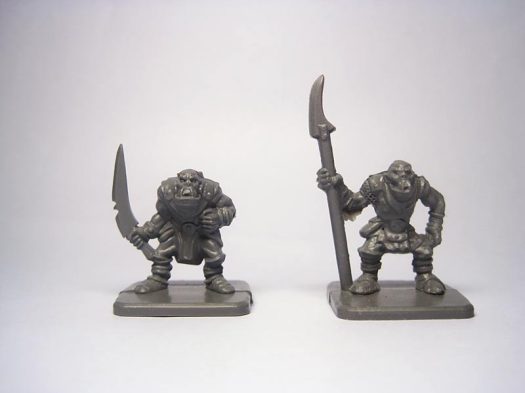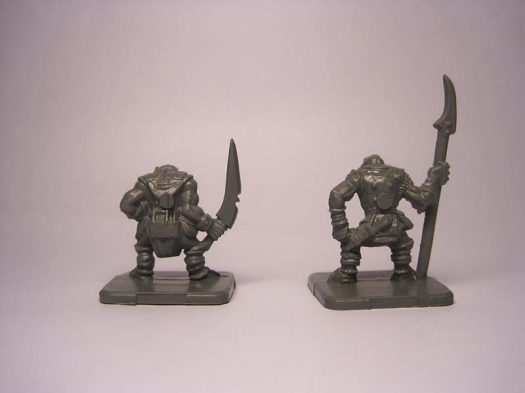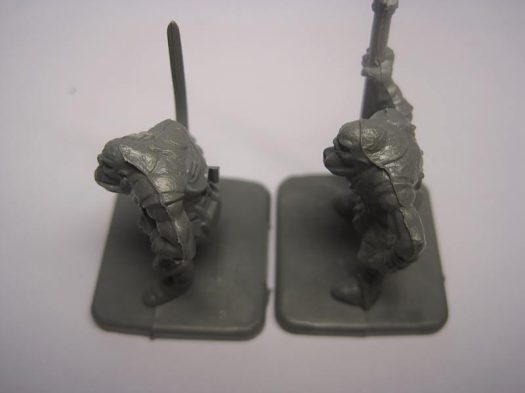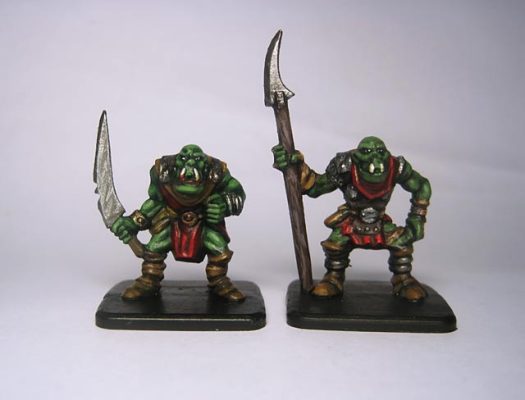I have bunch of really cheap miniatures in my collection. So for all of you that come across these cheap minis while surfing the web and wonder if miniatures that cheap really are worth your time and money I am starting a series of reviews called “Dirt Cheap”.
I am starting with the cheapest of the cheap. Em-4’s fantasy plastics. The range consists of six different miniatures, three orcs and three dwarves. They are sold in bags of 50 for £7.7 (!), which works out at rougly £0.16 per miniature! They can also be bought loose for £0.21 per miniature. As you can see this is mindboggingly cheap, and when I put in an order for some other stuff I couldn’t resist adding a few to my order.
First a bit of background on these minis. They were first released in 1990 as a part of the Fantasy Warriors box set, a game produced by Grenadier Models. They seem to have been sculpted by Mark Copplestone but imitating the style of Nick Lund.
As you can see from the pictures they are produced in a grey plastic and unlike other plastic miniatures they do not come on a sprue.
The orcs have one of the classic old school monopose poses, the weapon to the side and the hand close to the hip. Not very three dimensional, but very much standard for the time they were released, so no problem there.
The details are very soft, and these miniatures are not very detailed to begin with.
On the back of the miniatures, there are these weird round pegs sticking out. This is probably where the plastic was injected. These were quite easy to remove though if you are a reasonably experienced hobbyist since the plastic is quite soft and easy to cut.
The mouldlines are very heavy, but since these guys doesn’t really have any fine details, removing them was easy.
After a quick paintjob they do look quite good. The swordsman also turned out to have slightly better defined details in the face. Things like is hard to notice until you paint the miniature. I do like the look on the face of the left one.
It is hard to review miniatures that are as cheap as these because you are not expecting anything from them. Compared to other plastic miniatures from the early 90’s these orcs look fine. And that is probably the only standard you can hold them against without being unfair. At this price, it is hard to say anything else than that they are anything but good value. But if you expect to them to be anything like a modern plastic miniature, you will be disappointed.
I don’t see myself getting more of these. They need some work to look good, and I simply don’t have the need for loads of cheap plastic old school orcs. But if you do, they are indeed very cheap, and EM4 is a very nice company with excellent service.
Links and further reading:
They can be bought from: http://em4miniatures.com/. A company that also sell a lot of very nice ex-Grenadier metal miniatures at very good prices.
In this thread at the Lead Adventure Forum, there is a very impressive project, where an entire army of orcs are made from EM4-plastics. Three monopose orcs into 147 unique ones!





















 Saddles, wont use these. Looks heavy and awkward for riders that are supposed to look light and nimble. The feet wont even rest properly in the weird platform stirrups.
Saddles, wont use these. Looks heavy and awkward for riders that are supposed to look light and nimble. The feet wont even rest properly in the weird platform stirrups.